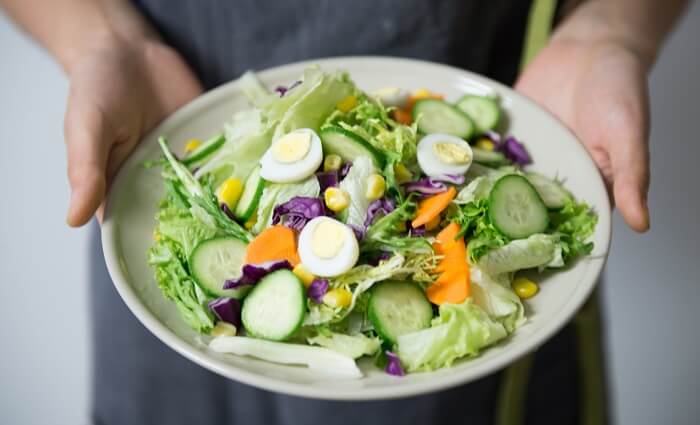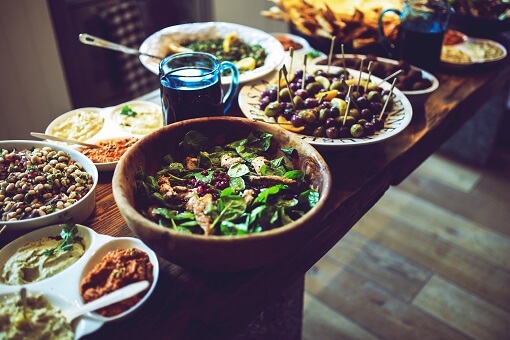
Do you or someone you love have symptoms of diabetes? Or perhaps you have a family history? Or maybe that little voice in the back of your mind is saying perhaps it’s time to get checked?
About 1.7 million Australians have diabetes, and 500,000 Australians are living with undiagnosed type 2 diabetes right now. There are some pretty serious complications for untreated or poorly managed diabetes, so it’s really important to be proactive. While diabetes is common, it is certainly not a routine condition. It’s great to learn about the signs, and act early to diagnose, treat, prevent and educate yourself. You may not know, that food has such a vital role in management and can play a huge part in the prevention of type 2 diabetes. As Accredited Practicing Dietitians, we are passionate about how food can help prevent and manage many chronic diseases. For National Diabetes Week we recognise “It’s About Time” more of us detect all types of diabetes earlier and save lives. We explain a little about diabetes and also show you what type of food can make a difference and how.
Firstly, what causes type 2 diabetes?
Whilst type 1 diabetes is an auto-immune condition which cannot be prevented, type 2 diabetes is different. It is a progressive condition which is often brought on by a combination of genes and lifestyle factors.
It causes three possible changes in the body, and these can happen all at once, or over time and at different rates:
- The pancreas doesn’t make enough insulin and/or
- The insulin produced from the pancreas isn’t effective and/or
- The cells do not respond to insulin effectively
What are the risk factors?
Diabetes Australia recognises factors which may increase your risk of diabetes. These are:
- a family history of diabetes
- older (over 55 years of age ) – the risk increases as we age
- over 45 years of age and are overweight
- over 45 years of age and have high blood pressure
- over 35 years of age and are from an Aboriginal or Torres Strait Islander background
- over 35 years of age and are from Pacific Island, Indian subcontinent or Chinese cultural background
- are a woman who has given birth to a child over 4.5 kgs (9 lbs), or had gestational diabetes when pregnant, or had a condition known as Polycystic Ovarian Syndrome.
What are some of the symptoms?
Some of the more common symptoms include:
- Thirst
- Increased urination
- Tiredness
- Hunger
- Poor healing and skin infections
- Blurred vision
- Gradually putting on weight
- Mood swings
- Headaches
- Feeling dizzy
- Leg cramps
- Or…NONE! Some people may display no symptoms, and that’s why it’s important to get check-ups regularly. The National Diabetes Week message of “It’s About Time” reminds us of the importance of early detection. So, if you are over 40 and haven’t had your blood sugar checked, ask your GP.
Eating for blood sugar health
If you are at a higher risk of diabetes, and especially if you have a family history, eating well can help to prevent or delay the onset of diabetes. Here are some general principles you can follow for your blood sugar health.
- Eat real food. Most of your diet should come from fruits and vegetables. At least half of your daily diet should consist of good quality fruits and veggies. Yes, the old 2 serves of fruit and 5 veg is an easy way to remind yourself.
- Lean protein. One-quarter of your daily diet should include a lean protein such as chicken, fish, shellfish, eggs, beans or low-fat dairy or yoghurt.
- Don’t cut the carbs. Swap empty, starchy carbs for a whole grain alternative, high in fibre and containing complex carbohydrates. These are digested much more slowly and don’t spike insulin levels.
- Fibre is your friend. A high-fibre diet keeps those blood sugar levels stable and is great for bowel health. Try legumes and pulses on top of a variety of fibre-rich fruits and vegetables.
- Healthy fats. Avoid high trans fats from fried food or partially hydrogenated oils. Choose fats from olive oil, fish oils, nuts, seeds and avocados.
- Less red meat. Eat less red and processed meat.
- Drink water. Drink water as your main drink, and only drink sugar-laden alternatives very occasionally.
- Become a reader of labels. Avoid packaged and processed foods. Learn how to calculate the sugar content in food. Once you start, it may shock you how much sugar is in some foods. Often foods which appear to be ‘healthy’ options contain high amounts of sugar. How do you spot it? Sugar may also be labelled as high fructose corn syrup, invert sugar, corn sweetener or dextrose.
How can the Mediterranean diet help?
Following a traditional Mediterranean diet is an easy way to ensure you are eating for health, without skimping on flavour or enjoyment. The Mediterranean diet naturally follows the above principles. It is high in fruits and vegetables, good fats, good proteins and whole grains. It is also lower in red meat and processed foods.
There is an abundance of Mediterranean recipes available which you can draw from. In most cases, it is about real and simple food enjoyed with family. There are no restrictions so the nutritional value is high.
Choose the more traditional Mediterranean recipes borne from Greek peasant food or those approved by an Accredited Practicing Dietitian for your daily meals. There are many Mediterranean recipes which are popular in Western countries and are lovely as a ‘sometimes’ dish but were never intended for everyday eating. (Baklava, moussaka, loukoumades we’re looking at you :-))
Interested to explore more about the Mediterranean Diet? Here’s how…
Try some Mediterranean recipes for yourself for FREE!
We have assembled a whole day’s worth of delicious, healthy, Dietitian Approved Mediterranean recipes. We would love for you to try them out at home, and really understand how tasty the Mediterranean Diet is, and how easy the meals are to prepare.


